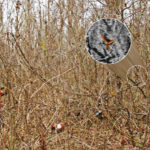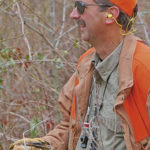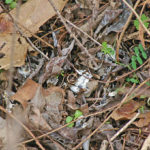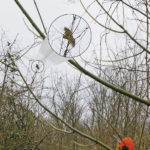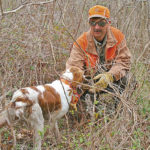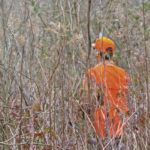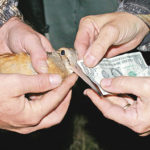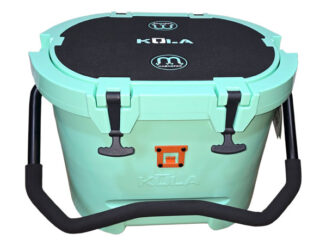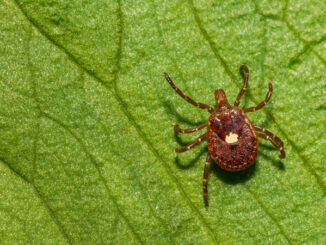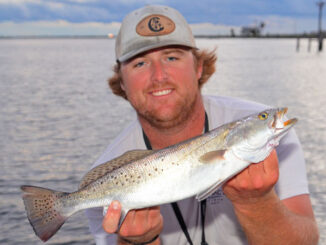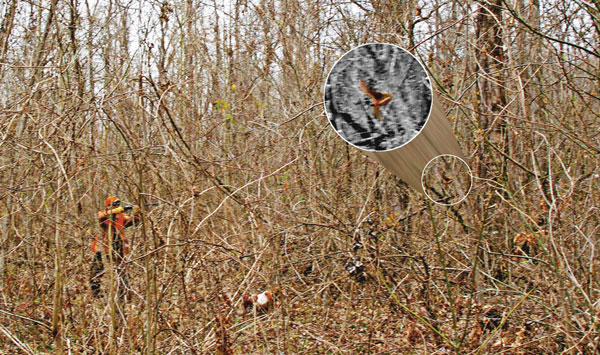
Target these long-billed birds on the state’s public lands, and you’re certain to have a great time.
At the end of day six, when the good Lord passed a final glance over all of his creation, a wink and a smile must have went out to the diminutive woodcock. With eyes set toward the top of its head and ears located in front of its eyes near the top of its bill, woodcock may look weird to some. But this game bird was designed for stealth along with certain survival skills and characteristics, making it a favorite species of upland hunters.
There is plenty to think about in the dark — besides paying close attention to the stretch of winding road between Pierre Part and White Castle that follows Grand Bayou — while driving to Baton Rouge. Most of my thoughts reflected on the night I’d spent with Louisiana Department of Wildlife and Fisheries biologist Fred Kimmel, banding woodcock on Sherburne Wildlife Management Area the previous year.
At the end of our evening banding, Kimmel, also an avid woodcock hunter, extended an open invitation to join him on a hunt later in the year.
Unable to link up during the 2007-08 woodcock season, we were finally able to get together in 2009. The plan was to meet him and deer study biologist Scott Durham at the LDWF headquarters, and from there drive to Three Rivers WMA to hunt.
Three Rivers, located in Concordia Parish between the Mississippi and Red rivers, like much of Louisiana, is ideal habitat for woodcock that winter in the state.
“If you think of all of the land behind locked gates in deer clubs, a woodcock hunter never even gets in there,” Kimmel said, pointing out that woodcock have little pressure throughout much of the state. “Certainly, most of the woodcock in the state never see a hunter. But it varies from year to year. The key is moisture. If you don’t have the right moisture, where they were last year might not be the same case this year.”
North to south, woodcock carry several monikers, the most popular being timberdoodle. Others include mud snipe, wood snipe, bog sucker and night partridge. But it’s the scientific name (scolopax minor) that perfectly describes why Louisiana is No. 1 in woodcock harvests annually — more than all of the other southern states combined.
Scolopax minor means “little lover of swamps or bogs.” Regardless of meaning, science has honed this former shore bird’s name to match the terrain it prefers during all seasons.
Upon arriving at Three Rivers, moisture definitely wasn’t a problem. What’s more, the WMA was classically suited for woodcock, consisting of a woody mix of hackberry, ash, sweet pecan and honey locust, with cutovers in between that we would be hunting, clothed in a tangled mess of trumpet creeper.
Trumpet creeper is a deciduous climbing vine, browsed by deer much of the year. But in the Louisiana winter months, it makes excellent cover, protecting woodcock from predators.
“Woodcock basically want clean ground and overhead cover or structure,” Kimmel said. “The other thing is moisture. They probe for earthworms, so they need to be able to get their bills into the ground. Therefore, the soil needs to be moist enough, close to the surface, where they can get them.”
Woodcock hunting conjures up images of fine breeds of sporting dogs such as English setters, German shorthaired pointers and brittany spaniels locked on point while men in tweed coats carrying elegant walnut over-and-under shotguns walk in to make a flush. Those images are just simply a figment of imagination where trumpet creeper is involved.
Woodcock hunting is a physical upland walking sport and a challenge to hip flexor muscles in the type of terrain we hunted. And though Kimmel’s two brittany spaniels took much of the bird-locating load off of us, we still had to keep up.
“It’s work,” Kimmel said. “And it’s not an easy thing being an upland hunter in Louisiana — woodcock being the main game — but you might find a few quail too. But the thing that’s nice about it is you do it somewhat leisurely, it’s good exercise and if you don’t like being perched in a deer stand or don’t like sitting in a duck blind, it’s a good way to get out.”
Though we managed a few birds and double-digit flushes during the morning, woodcock hunting north and south isn’t just measured in bag limits or the amount of meat you can put up. Instead, it’s more the number of flushes, the dog work and camaraderie that seems to satisfy the upland woodcock hunter.
The cover we hunted also didn’t offer numerous “classic points,” where we walked ahead of the dogs, flushed the birds and made picture-perfect shots. Most of the opportunities we had at the skittish birds were contorted yoga-inspired stances, with 7 1/2- and 8-shot escaping our barrels undeterred from penetrating the atmosphere.
There simply aren’t enough rounds of five-stand or sporting clays to get you prepared for woodcock in the cutovers.
Though a tough hunt, the cutovers didn’t entirely deny us the pleasure of seeing points more gentle uplands offer.
On one occasion, Kimmel approached his brittanies in a little area with less vines and a mix of low briars and southern shield fern. Now wet and smudged with grayish bottomland mud that streaked the patches on their white coats, the two dogs held the bird.
Somewhere in front of them was an invisible feathered object in dead-leaf plumage, with its presence detected only by the odor it emitted into the morning’s cool winter air. Then, suddenly, a burst of chaotic energy with the distinct whistle of woodcock wings lifted the bird from the understory.
As the single report from Kimmel’s over-and-under dissipated, downy light-brown feathers drifted in the breeze as his brittanies rustled up the retrieve.
“Most of the stuff you get them out of on Three Rivers is the thick vines, and because of the trees close by, you kind of associate it with vertical structure,” Kimmel said. “Up north, it’s aspens that are known as vertical structure. In some places here, where you have dense tree regeneration, you find them. But it’s just overhead structure that’s clean underneath that you’ll find them, where it keeps them safe from raptors and other predators.”
Woodcock populations have been on the decline for several decades. Biologists agree the root cause is habitat loss in both the eastern and central migratory flyways. The result of that decline has led to reducing bag limits to just three birds.
Hunter participation in Louisiana, where woodcock are concerned, has also been on the decline for the past 30 years. According to Kimmel, approximately 40,000, dating back to the early 1970s, hunted woodcock. Today, it’s estimated there are fewer than 4,000 licensed hunters who pursue them annually.
“Try it — you might like it,” Kimmel said. “If you like dogs, it’s something you can do year round — not the hunting part, but the training and work of the dogs. There’s a lot of pleasure in training and watching that first point. Plus, it’s good exercise.”
When Durham and I recently recounted our hunt on Three Rivers, he said, “Man, that stuff wore me out. You might have noticed I quit trying to bust through it and started following (Kimmel).”
I had to concur with Durham; it wore me out too. What’s more, the good book says, when the Lord finished his handy work, He rested. There’s no doubt, a Three Rivers WMA woodcock hunt isn’t what the book had in mind, but I’ve got to admit — I sure rested the next day after high-stepping in the cutovers.
